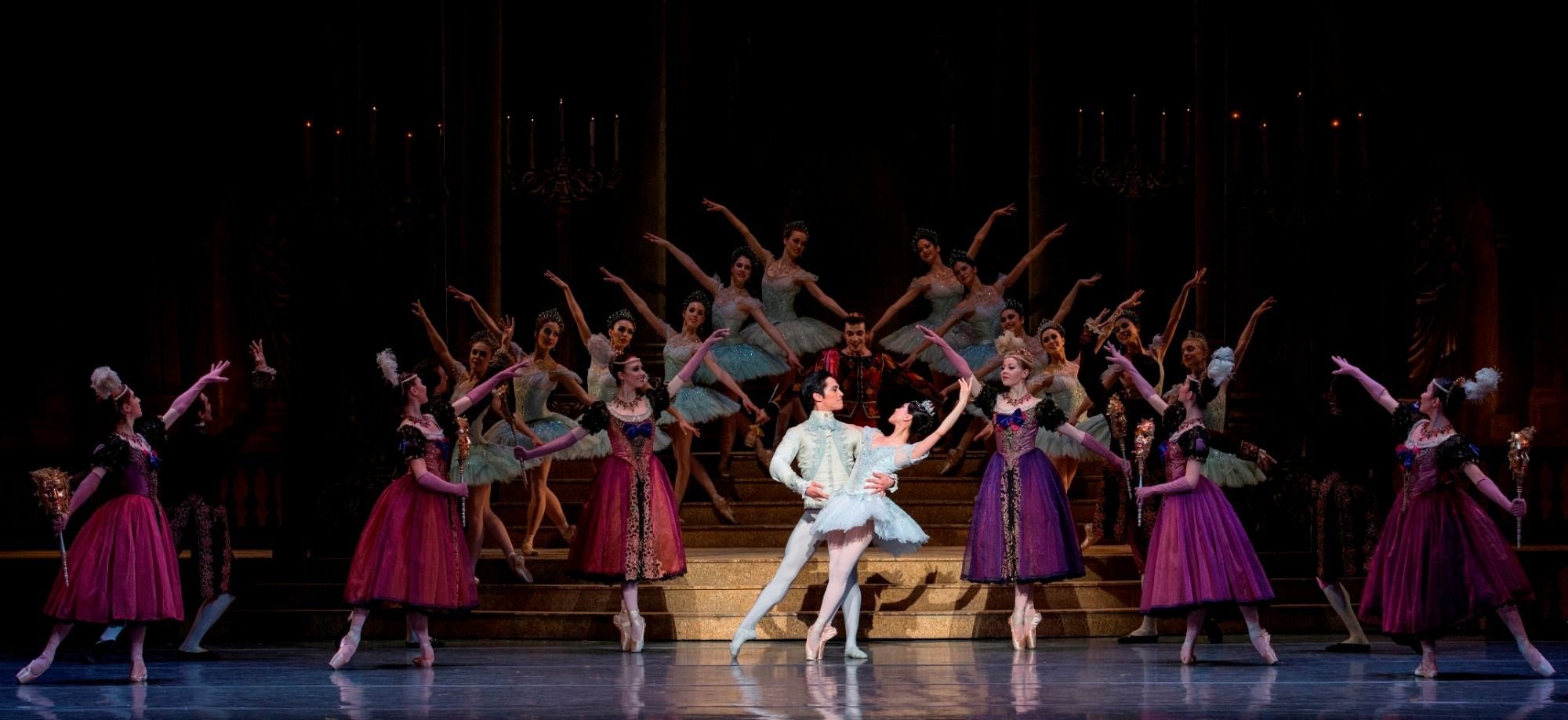WHRB Classical Reviews the Boston Ballet's Cinderella

Misa Kuranaga and Jeffrey Cirio in Sir Frederick Ashton's Cinderella; photo by Gene Schiavone, courtesy of Boston Ballet.
Cinderella has served as the world’s quintessential rags-to-riches story for centuries, teaching people of all ages the importance of being kind and patient and embracing truth in the world. With a cast featuring international talent, beautifully-lighted scenery, and brilliant dancing, the Boston Ballet brought to life Cinderella’s evolution from a servant girl dusting the fireplace at home into the Prince’s true love. On May 10, Seo Hye Han gracefully played the role of Cinderella set against Prokofiev’s flowing and versatile masterwork, along with Sir Frederick Ashton’s comprehensive choreography.
In Act 1, while her stepsisters (Doble, Lam) are consumed in their endless banter and competitive vanity, Cinderella frequently fantasizes of dancing with a partner, for which she simulates with her broom. Her independent struggles and hopes are contrasted by the frenzy that the stepsisters live in, as they prepare for the ball with dance lessons, tailors, shoemakers, jewelers, and hairdressers. The scene then transitions to the forest, where fairies and sprites of all varieties prepare to transform Cinderella’s life from being neglected at home to being the kingdom’s most beloved princess. The various fairies (Chalendard, Chae, Buriassi, Parrondo, Kapitonova) each bring their own enchanted taste to make Cinderella’s dreams come true. Dressed in color-coordinated outfits, they take Cinderella into the world of magic starting with the pumpkin carriage that shuttles her into the grandeur of the ball. Other highlights include the Jester (Rines) bringing in a comedic and jubilant tone to the masterfully coordinated ballroom scene, where Ashton has coordinated beautiful pas de deux dances and conjured the whole ballet in creating a festive atmosphere to compliment Cinderella’s life-changing meeting with the Prince.
The ballet’s interpretation of Cinderella’s story offers a slightly different touch than many other versions of the tales that are usually told. There is no stepmother who locks Cinderella in her room or bombards her with endless chores. Rather, she lives in neglect by her stepsisters, and is troubled by her grief for her late mother and a helpless father. The stepsisters are also not competing with Cinderella for the prince. They simply hope to impress all the men at the ball. Ashton’s version of the ballet also contributes many factors of comedic relief through characters like the jester and the never-ending craze between the step sisters, which complements some of the darker moments of Cinderella mopping and the regal beginning of the ball. The vast array of backgrounds by each of the dancers also bring their own tastes and interpretation to the stage, leading to more versatile styles of dancing and diverse stage presence.
All along this beautiful plot development, in the pit, the orchestra contributes just as much to the entire experience, providing beautiful contrasts between Cinderella’s melancholic theme and the stepsisters’ frenzy to the jester’s bouncy and comical nature.
Overall, this production of Cinderella weaves all the threads together in a masterful and perfect fashion, from the dancing and the music to the flawless coordination of lighting and costume design. On every level, this production was engaging, beautiful, and a heart-capturing reenactment of a timeless classic.
Claire Tseng is a DJ for WHRB Classical. Tune in for operatic, choral, symphonic, and chamber works weekdays from 1pm to 10pm, Saturday from 1pm to 9pm, and Sunday from 2pm to midnight.